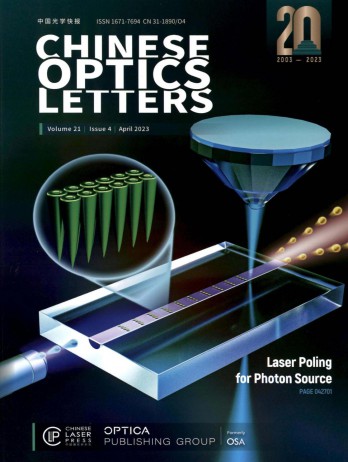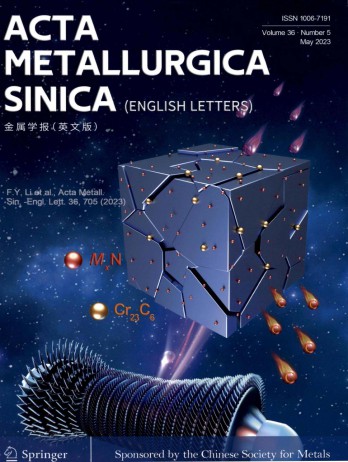一般情況下《Chinese Optics Letters》雜志投稿被拒,版面費有可能退還,具體取決于期刊的相關(guān)政策和實際情況,詳細信息可聯(lián)系雜志社或咨詢在線客服。
1. 投稿被拒但尚未支付版面費
如果稿件在審稿階段被拒,且尚未支付版面費,自然無需考慮退款問題。
2. 已支付版面費但被拒稿
一般可退:大多數(shù)期刊(包括《Chinese Optics Letters》雜志)在退稿后會退還版面費,尤其是如果期刊尚未進入排版或出版流程。
部分扣除審稿費:有些期刊可能會扣除部分審稿費用(如已進行外審),剩余部分退還。
3. 特殊情況
已排版但未出版:如果期刊已完成排版但尚未正式出版,部分期刊可能按比例扣除部分費用后退還剩余款項。
已出版后撤稿:如果論文已正式發(fā)表,通常不退版面費,因為費用已用于編輯、排版和出版流程。
4. 如何申請退款
聯(lián)系雜志社:通過郵箱或電話與《Chinese Optics Letters》雜志雜志社溝通,說明情況并申請退款。
提供支付憑證:如需退款,可能需要提供匯款記錄或發(fā)票信息。
《Chinese Optics Letters》雜志投稿建議:
1. Title
The title should be concise but informative. Avoid beginning with an article or a preposition. The words "new" or "novel" should be avoided in the title and the text for legal reasons. Titles may be edited by the publisher to facilitate computer search.
2. Author names and Affiliations
Author names should be given in full and consistent form to facilitate indexing. Affiliations and postal addresses for all authors should appear on the title page.
3. Abstract
The abstract should be no longer than 100 words. It should be informative, without descriptive words or citations, and contain the major conclusions and quantitative results or other significant items in the paper. Together with the title, the abstract must be adequate as an index to all the subjects treated in the paper, and will be used as a base for indexing.
4. OCIS Codes
OCIS codes should be provided to help with indexing. This set of codes was formulated by the Optical Society of America and well-known in the optical research world. OCIS codes are available on Chinese Optics Letters’ web page and the OSA publication web pages. Each manuscript must be given 2-4 OCIS codes below the abstract, and the principal index code should be placed first.
5. Equations
Equations should be punctuated and aligned to bring out their structure, and numbered consecutively in round brackets on the right-hand side of the page.
Notation. Notation must be legible, clear, compact, and consistent with standard usage. In general, acronyms should be defined at first use.
Variables and Vectors. Set single-letter variables in italics (Eg. M). Set vectors in boldface (Eg. m). Functions, derivative "d," abbreviations, and multi-letter identifiers should be set in roman (plain) type (Eg. α, cos, ∫...dx).
Fences. For simple bracketing the usual order of parentheses and brackets is { [ ( { [ ( ) ] } ) ] }.
Bit and Byte. The standard abbreviations for bit and byte are b and B, respectively. To avoid confusion, these units should be spelled out in most cases (1 bit, 20 GB). Display equations should be broken and aligned for two-column display unless spanning across two columns is essential. Equations should be centered with equation numbers set flush right. For Math Type math, use the Format Equations feature to format all equations as Times + Symbol 10. Note: There must be a blank line space above and below each displayed equation.
6. References
References should be numbered consecutively in the order in which they are first referenced in the body of the manuscript. Two references [2,3] should be included together, separated by a comma, and three or more consecutive references should be indicated by the bounding numbers and an en dash [1-4]. When compiling your references, be sure to include the titles of articles. COL requires this information before a paper can be sent to peer review. The reference titles will subsequently be removed by copy editors before they are published, so this information is not included in the length estimate sent to authors when a positive decision is made by the editor. All reference authors should be included in the reference list but when reference authors are mentioned in the text, use surnames only (unless further clarity is needed), and use "et al." and first author name when three or more authors are given. The format of references is as follows:
Journal paper
1. Q. Ji, X. Ma, J. Sun, H. Zhang, and Y. Yao, "Novel method for measurement of effective cavity length of DBR fiber", Chin. Opt. Lett. 8, 398 (2010).
Book
2. N. Bloembergen, Nonlinear Optics (Springer, 1965).
Paper in published conference proceedings
3. R. E. Kalman, "Algebraic aspects of the generalized inverse of a rectangular matrix", in Proceedings of Advanced Seminar on Generalized Inverse and Applications 111 (1976).
SPIE proceedings
4. S. K. Griebel, M. Richardson, K. E. Devenport, and H. S. Hinton, "Experimental performance of an ATM-based buffered hyperplane CMOSSEED smart pixel array", Proc. SPIE 3005, 254 (1997).
Paper accepted for publication
5. H. Qi, M. Zhu, W. Zhang, K. Yi, H. He, and J. Shao, “Dependence of wavefront errors on the nonuniformity of thin film", Chin. Opt. Lett. (to be published).
Internet links
6. A. G. Ramm, H. Wang, and J. Ye, "Invisible obstacles", www.arxiv.org/abs/math-ph/0608034 (June 1, 2011).
Patent
7. K. Zhang, J. Zhang, R. Wang, R. Guo, J. Wang, and K. Peng, “All solid state single frequency and frequency-doubled laser” (in Chinese) Chinese Patent ZL98125474.8 (2000).
7. Figures and Tables
Figures should be suitable (resolution above 300 dpi) for immediate reproduction and embedded in the text. They should be set as one column wide (6-8 cm) if possible unless two-column display is essential. In the figures, the main lines should be about 0.3 mm in width, and the assistant lines 0.15 mm. Notations in the figures should be distinct and consistent with the same ones in the text, and their font size will be 7-9 pt. Figures should also be uploaded as separate figure files. Each figure should have its own caption. Color Art is Online Only, and free to authors.
Tables must be numbered in order of appearance and identified with appropriate titles. The table title, which should be brief, goes above the table. Note that tables are usually typeset, not scanned (tables cannot be electronically reduced in size). Tables should be set in one column wide if possible and be placed near their first mention in the body.
8. Article Length and Proof
Note that Chinese Optics Letters has a limit of five printed pages. If a paper exceeds this limit, it must be shortened before the paper is accepted. If the page proof is over the five-page limit, the proof must be shortened before the paper can be assigned to a final issue. Authors should use the COL Word or LaTeX templates to prepare manuscripts to facilitate length checking.
《Chinese Optics Letters》雜志是由中國科學院上海光學精密機械研究所;中國光學學會主辦的科學學術(shù)期刊,創(chuàng)刊于2003年,月刊國內(nèi)外公開發(fā)行,國際刊號:1671-7694,國內(nèi)刊號:31-1890/O4。
該雜志以反映科學改革與發(fā)展最新成果、探索科學規(guī)律為宗旨,學術(shù)視野覆蓋了光纖光學與光通信、激光器與激光光學、材料、非線性光學、量子光學等多元領(lǐng)域。
《Chinese Optics Letters》雜志在學術(shù)界具有較高的影響力,其收錄與榮譽有:中國優(yōu)秀期刊遴選數(shù)據(jù)庫、中國期刊全文數(shù)據(jù)庫(CJFD)、中國學術(shù)期刊(光盤版)全文收錄期刊、中國科技期刊優(yōu)秀期刊、CSCD 中國科學引文數(shù)據(jù)庫來源期刊(含擴展版)、統(tǒng)計源期刊(中國科技論文優(yōu)秀期刊)、知網(wǎng)收錄(中)、維普收錄(中)、萬方收錄(中)、EI 工程索引(美)、CA 化學文摘(美)、SCI 科學引文索引(美)、國家圖書館館藏、上海圖書館館藏、文摘與引文數(shù)據(jù)庫等。無論是學術(shù)研究還是實踐指導,《Chinese Optics Letters》雜志都能提供可靠的支持。
聲明:本信息依據(jù)互聯(lián)網(wǎng)公開資料整理,若存在錯誤,請及時聯(lián)系我們及時更正。



